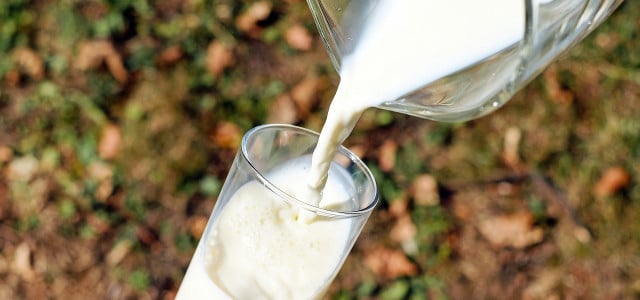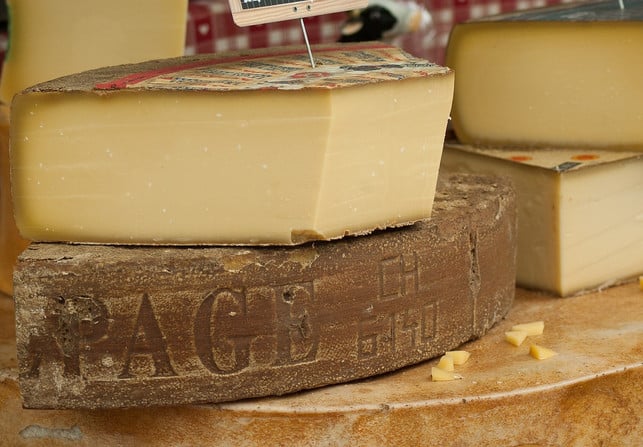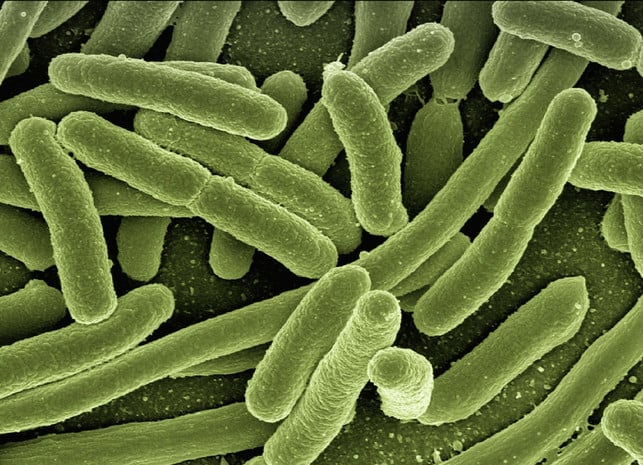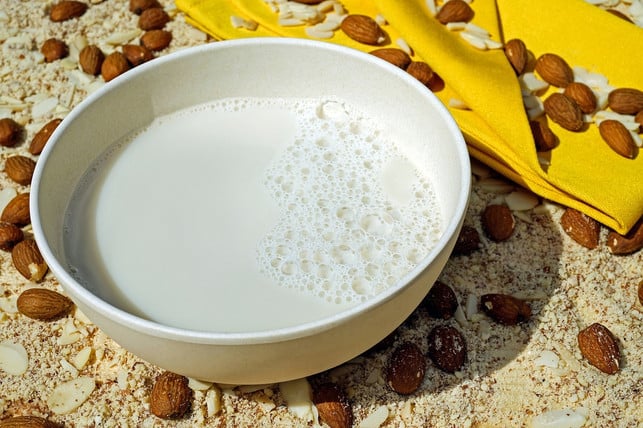
There have been debates about the health risks of raw milk and raw milk cheese for years. We’ll tell you what makes raw milk and what you should pay attention to when consuming.
Raw milk is the untreated udder milk of farm animals, which was neither pasteurized nor homogenized. Like the pasteurized milk, it mainly comes from milk cows. Legally, milk products declared as raw milk must not be heated over 40 degrees or filtered by microfiltrating.
Products from raw milk have been a real dispute between two fronts since the pasteurization was introduced in the 1890s:
- Proponents: Inside the raw milk, among other things, swear by their supposedly higher nutritional value due to more enzymes and minerals. They also assume that the body’s own immune system is strengthened by consuming bacteria -containing raw milk. To date, these assumptions have not been scientifically proven.
- Instead, the Federal Health Council is said to have warned that “eating raw milk does not offer any advantages, but that it is a health risk for humans compared to consuming heated milk”.
- The Federal Institute for Risk Assessment (BfR) also advises to always boil milk before eating, i.e. to be pasteurized and thus protect itself from infections (such as Campylobacter-Enditis or EHEC disease).
In view of the health risks that arise from raw milk, the disadvantages of raw milk are higher than the advantages, according to the BFR.
Raw milk cheese: How healthy is it really?

(Photo: CC0 / Pixabay / Jackmac34)
Proponents: Inside the raw milk particularly worried about the raw milk cheese. Raw milk cheese is known for its characteristic aromatic taste. This is particularly generated by the bacterial cultures in particular. They stimulate the maturation processes of the cheese and ensure diversity of flavors. But it is exactly those bacteria that are also concerned about human health.
Cheeses such as Camembert de Normandie and Roquefort AOC are protected varieties that can only be made from raw milk. In other varieties, it is up to the manufacturers whether they use raw milk or pasteurized milk. Still other varieties are made from raw milk, but they are still heated to over 40 degrees during the manufacturing process. Above all, this includes hard cheese such as:
- Brie
- Parmigiano reggiano dop
- Gruyère
- Emmental AOC and Allgäu Emmentaler
- Hobble cheese
However, bacterial cultures are not always decisive for the aromatic taste of cheese. A variety of factors in manufacture play an important role in enjoyment. A pasteurized milk cheese can taste as aromatic through optimal storage and the right air humidity as a comparable raw milk cheese.
Raw milk: risks and guidelines

(Photo: CC0 / Pixabay / Geralt)
Since raw milk is not pasteurized, i.e. heated, it can be contaminated with intestinal germs such as Salmonella and E. coli. “These can cause food infection and in particular infants, toddlers or people with a weakened immune system, such as pregnant and older people, are dangerous,” writes the BFR.
The Federal Institute for Risk Assessment therefore recommends cooking raw milk yourself before eating in order to make it safe. Investigations show that disease -related germs are regularly detected in raw milk. For this reason, the sale of raw milk is fundamentally prohibited – with the exception of direct sales at farms.
While the sale of raw milk in the EU is allowed under certain conditions, a strict ban on sales for raw milk products applies in the United States.
Despite strict hygiene regulations and regular controls, numerous people develop listeriosis every year. This infectious disease caused by listeriosis is usually harmless for healthy adults. For risk groups – especially toddlers, pregnant women and immunocompromised people – they can have serious consequences.
Typical symptoms are flu -like symptoms such as fatigue, poor performance, fever and muscle pain. An infection in the last third of the pregnancy is particularly dangerous: it can lead to early or miscarriages. There is also a risk that listeria will be transferred to the unborn child, which can cause meningitis and permanent damage.
There is significantly higher protection against bacterial infections for pasteurized milk products. But here too, due to industrial manufacturing processes and occasional contamination, no complete security can be guaranteed.
Beware of raw milk during pregnancy
With the avoidance of raw milk products, you will definitely minimize health risks.
- You should always do without raw milk during pregnancy. In the best case, a listeria infection can be unnoticed and harmless for yourself, but for the unborn child it can become life -threatening. The organism that has not yet been fully trained is not yet resistant enough to deal with the bacteria.
Pasteurization does not cause health disadvantages
According to the BFR, the pasteurization of milk has no disadvantages for health. Only the content of B vitamins decreases slightly. However, minerals and milk fats remain unchanged, so that there is no difference between raw milk and pasteurized fresh milk in this regard.
The Federal Institute for Risk Assessment emphasizes that the low reduction in the vitamin content for nutrient supply in Germany does not matter, since the general supply of vitamins in this country is sufficient.
Alternatives to raw milk

(Photo: CC0 / Pixabay / Couleur)
The milk naturally serves to eat calves in the first few months. However, many cows suffer from our high milk consumption: they are permanently and grown, so that they give more than ten times as much milk as a cow usually for their young. Your life expectancy is just seven years. Milk production also causes significant environmental pollution. Cows that are considered to be milk production require considerable amounts of food, water and land. Cows also produce an enormous amount of methane – a gas that contributes strongly to the greenhouse effect and thus to global warming.
If you don’t want to completely do without milk, make sure to buy organic milk from the region as possible. Organic farms often hold smaller herds and do not use chemical-synthetic pesticides. Local production also means less transport, which reduces CO₂ emissions. You can get more information here: buy milk, but which one: organic? Heum milk? Fair? Regional? Fresh milk? Full fat?
Maybe you want to do without animal dairy products entirely. The market for vegetable milk alternatives is growing and improving rapidly. You can even make some at home:
- Oat milk
- Buckwheat milk
- Hazelnut milk
- Almond milk
- Nut milk
- Vegan buttermilk
With material of the dpa.
Read more on Utopia:
- Vegan cheese: The best vegetable cheese alternatives
- 10 tips to become a little vegan
- Vegan nutrition: advantages, rules and what you have to consider
Revised by Denise Schmucker
** marked with ** or orange underlined Links to sources of supply are partially partner links: If you buy here, you will actively support Techzle\.com, because we will then receive a small part of the sales proceeds. More information.